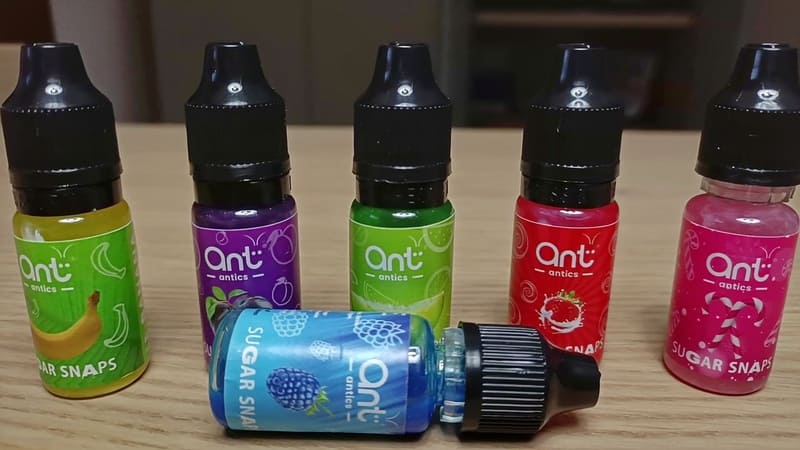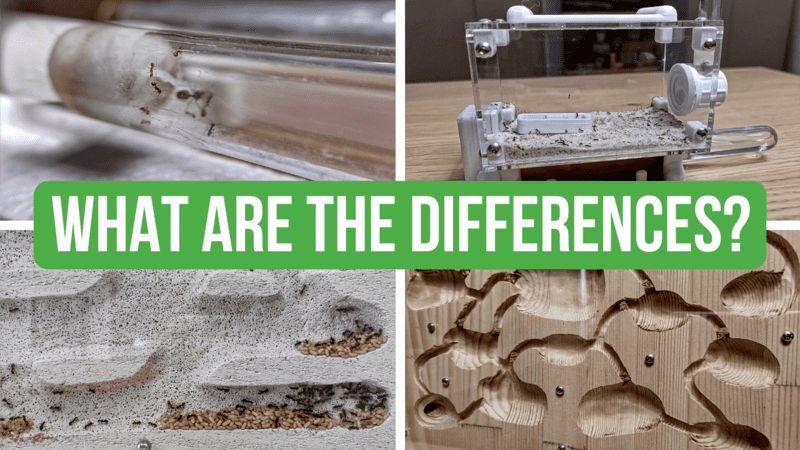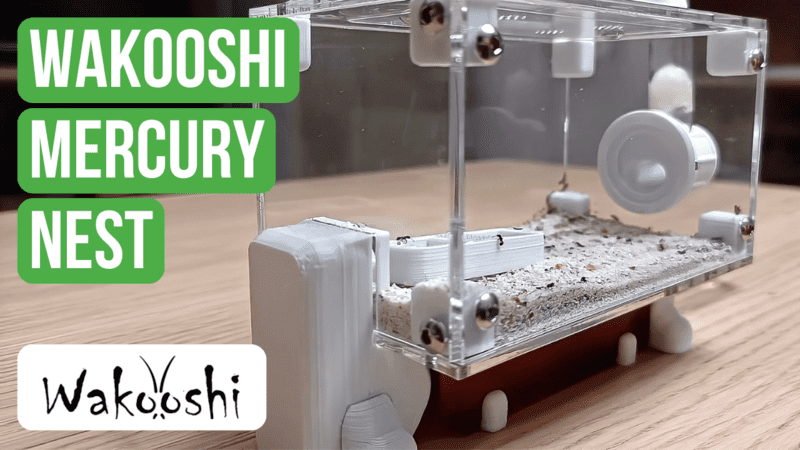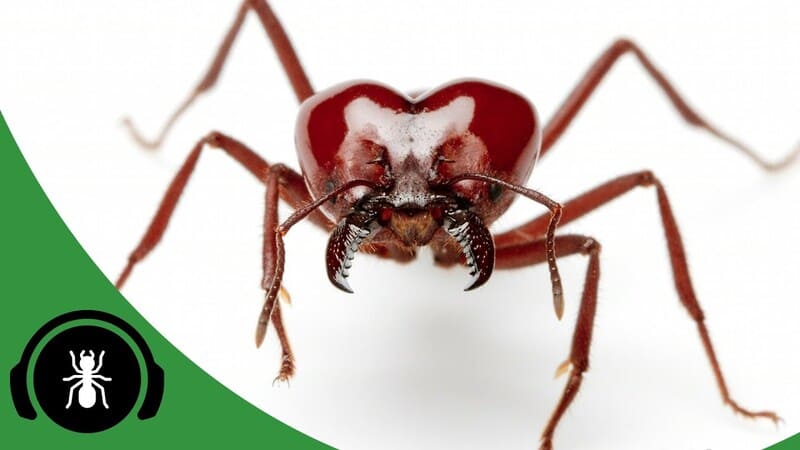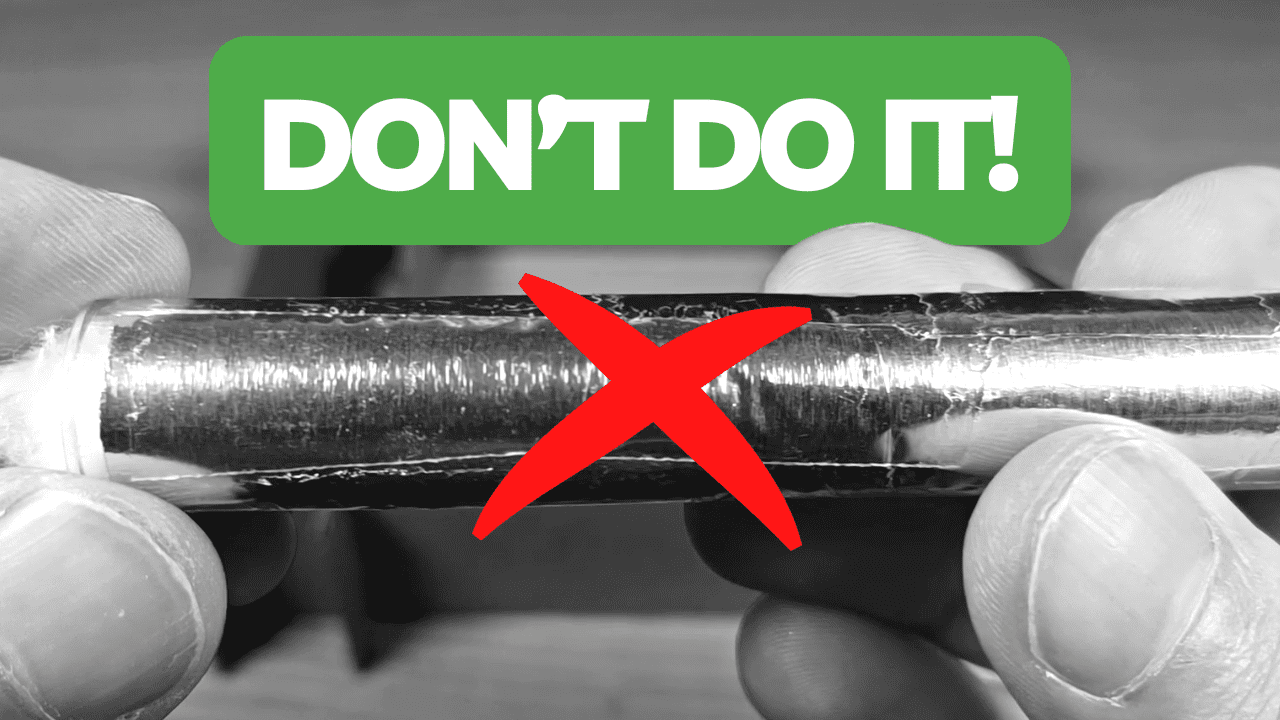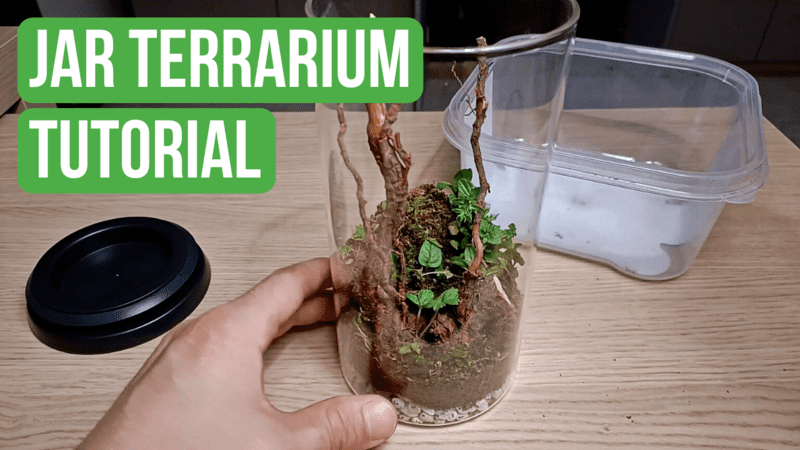How To Care for Tetramorium Caespitum

Hi guys! I hope you’re doing well!
Today we are going to learn how to care for a very common ant species: Tetramorium caespitum. By the end of the video, you will have all the information you need to start growing your own Tetramorium caespitum colony all by yourself!
Let’s get into it!
Download
Introduction
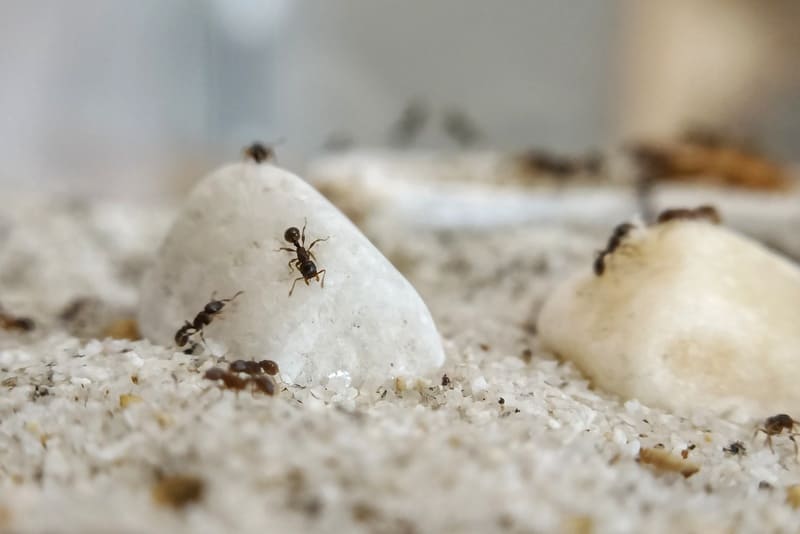
Tetramorium caespitum is a small, fast-growing species of ant, very easy to find all across the European continent.
This species was originally only found in Europe, but thanks to frequent travels across the ocean in the 1700s, now you can also find them in some parts of North America.
This species tends to nest under sidewalks, stones, pavement, and in the crevices of housing structures. For this peculiar characteristic, they are commonly called pavement ants.
The workers of this species range between 2 and 4 mm. Like most ant species, the queen of Tetramorium caespitum is much larger than the workers, with a size of approximately 8 mm.
Tetramorium caespitum is monogyne, meaning that this species' colonies accept only one queen. However, in some rare cases, multiple queens can start a colony together.
The nuptial flights of this species usually occur in the summer, between July and August.
Distribution
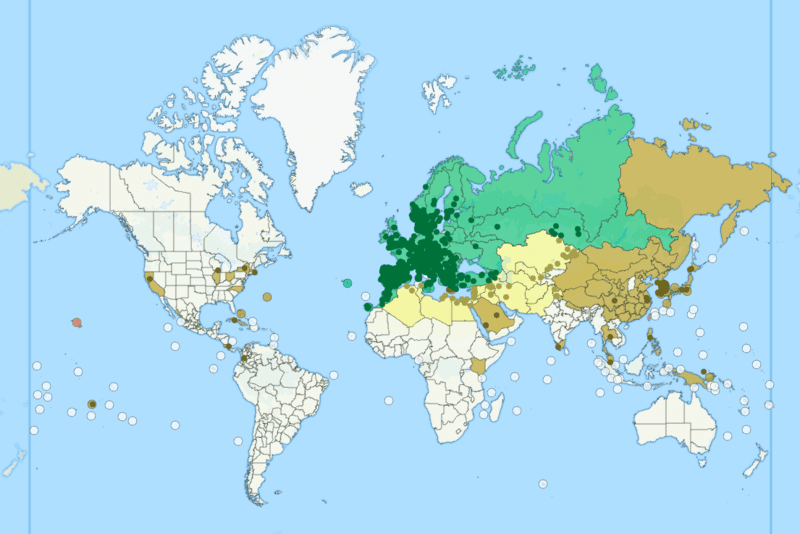
Temperature
Tetramorium caespitum, like many other Mediterranean species, is very adaptable to temperature changes. They do not have strict temperature requirements and can easily be kept at room temperature.
However, the ideal temperature for this species is between 21 and 27 degrees Celsius. If you live in a cold area or usually use an air conditioner in the room where your ants are, a heat mat or a heat cable could be useful.
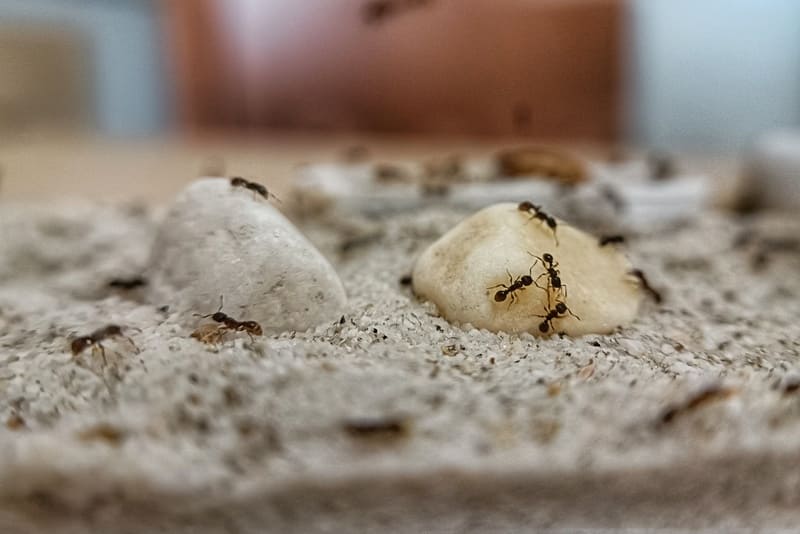
By raising the temperature of the nest, the metabolism of the brood will accelerate, reducing the time needed for the ants to fully develop into adults.
If provided with the right temperature and humidity levels, colonies of Tetramorium caespitum can grow extremely fast! When they reach a certain worker count, they start to grow exponentially, reaching outstanding numbers in a few years!
Humidity
They prefer a range of moisture levels from 50% to 60%. One thing you have to consider is that, like most ant species, Tetramorium caespitum doesn’t like dry climates!
If you notice that your nest dries out too quickly, you may need to consider changing the setup a bit. You can rearrange the elements of your formicarium to create an environment that better maintains moisture levels.
If you have a natural setup, you can easily increase the moisture level by spraying some water using a spray bottle, like one used in gardening. You can also add moisture retention materials, such as a piece of wood or a bark substrate.
Food
Like almost every ant species, Tetramorium caespitum needs some sugar for the workers and some protein for the queen and the brood.
Given their fast growth rate, they need a lot of protein!
Proteins are the building blocks of every animal body and are essential for the development of the ants. The queen needs protein for the production of eggs, which will grow into larvae and then into pupae.
During the life cycle of the ant from egg to adult worker, the brood needs a lot of protein to successfully complete the various stages of development. Once the body of the ant is fully formed, the need for protein decreases, and the need for sugar takes its place.
Sugar water should suffice, providing the colony with plenty of energy. Honey is also a very good source of sugar, possibly mixed with some water. If you want the best possible sugar source, the Ant Antics sugar snaps are the product for you!
With these fantastic colorful little bottles, you can provide your ants with a high-quality source of sugar, fueling their all-day working routine! With the sugar snaps, you can be sure of one thing: your ants are going to love them!
As a source of protein, you can give them almost any type of insect. In the wild, they usually eat crickets, different types of worms, fruit flies, and spiders.
If you’re watching this video, there’s a high chance you're just starting out, and you just caught or bought your first Tetramorium caespitum queen ant. If that’s the case, you don’t have to worry too much about feeding at this stage.
That’s because Tetramorium caespitum is a fully claustral species, which means that the queen won’t need to eat for at least a month until she has her first workers.
She especially doesn’t need protein right now, because she can obtain the protein she needs from the decomposition of her wing muscles. However, if you want, you can give her a little drop of honey. That should give her the energy she needs to start her own ant colony!
Hibernation
Like most European species, Tetramorium caespitum needs hibernation. They hibernate through the winter, from around late October to early March. They need at least a couple of months of diapause, a biological phase in which the queen doesn’t lay eggs.
This phase is very important for the health of the queen, and it’s the only time in the whole year when she can peacefully rest.
For this species, the ideal temperature for hibernation is between 5 and 8 degrees Celsius. I would not suggest going much lower than this, as it could create problems for the long-term growth of the colony.
If you don’t have a refrigerator available, you can place the colony in the basement or in the garage, where the temperature is not too low and not too high.
If you're a beginner ant keeper and this is your first hibernation, I would strongly suggest you check out this other guide! Here I explain in detail every aspect of this complex process called hibernation! What it is, why ants hibernate, and what are the most effective ways to hibernate your beloved ants!
Nest Type
Acrylic Nest
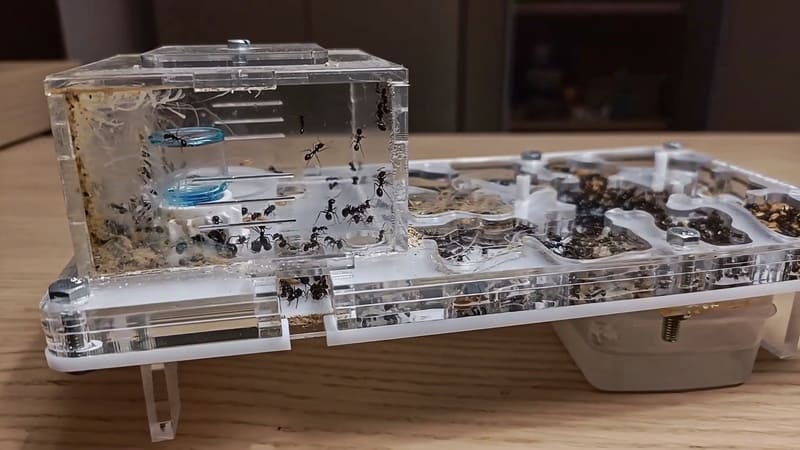
The most important thing you have to consider when choosing a formicarium for Tetramorium caespitum is that they are extremely good at finding vulnerabilities in the structure of the nest.
This, combined with the fact that they are a relatively small species of ant, creates the perfect mix that can invite lots of undesired tenants! For this reason, we have to choose a nest that makes escaping as hard as possible.
One of the best solutions to this problem is using an acrylic nest. They are usually built from several plastic layers, placed tightly one above the other to create the structure of the nest.
This particular type of construction creates an almost completely escape-proof structure, making it extremely hard for the ants to escape! With this type of nest, we can sleep peacefully at night, knowing that our beloved ants cannot take over our house by invading it!
Here you can find the review of the nest in the picture above, a very good ant-keeping product made by one of the largest companies in this space: Anthouse!
Test Tube-Based Nest
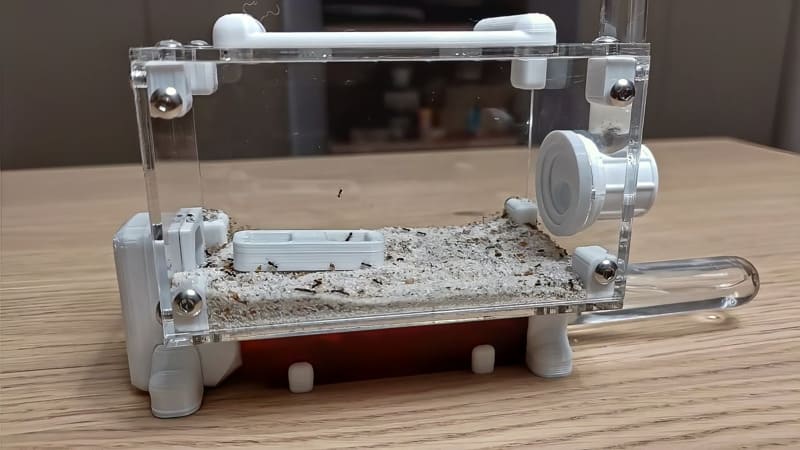
Discount!
Get this extremely cool ant nest on the WaKooshi online shop! Use the discount code BRUMA to get 10% off your entire order!
Another valid option when it comes to choosing a nest for housing a colony of Tetramorium caespitum is a test tube-based ant nest.
As the name suggests, these types of formicaria are based on the test tube setup, considered by many to be the gold standard of ant nests! With these nests, you don't have to worry about hydrating the chambers, as the humidity comes from the water reserve section of the test tube!
Like the more standard acrylic nest, the components of this type of nest fit tightly together and don’t have any gaps between them. If you like this concept, I would suggest you check out this product review! It's the review of the extremely cool ant nest in the picture above!
Naturalistic Setup
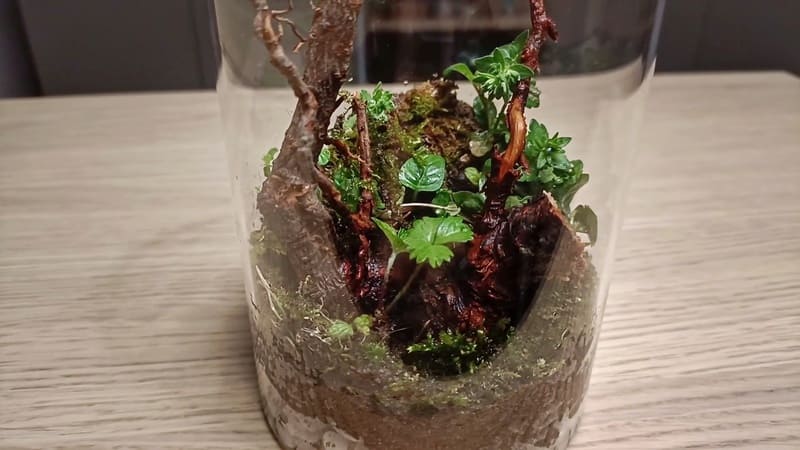
Another option could be a more naturalistic setup. For this easy nest alternative, all you need is a tank, some dirt, and, if you want, some decorations.
This nest perfectly replicates the natural environment that the colony experiences in the wild, making it easier for the ants to settle in. When choosing the enclosure for this type of nest, make sure to get one without any gaps between the various parts!
If you like the idea of making a naturalistic setup for your ant colonies, you will definitely like this other tutorial! In this one, you will learn everything you need to know to make the perfect jar terrarium, just like the one in the picture above!
I hope you have found this guide helpful!
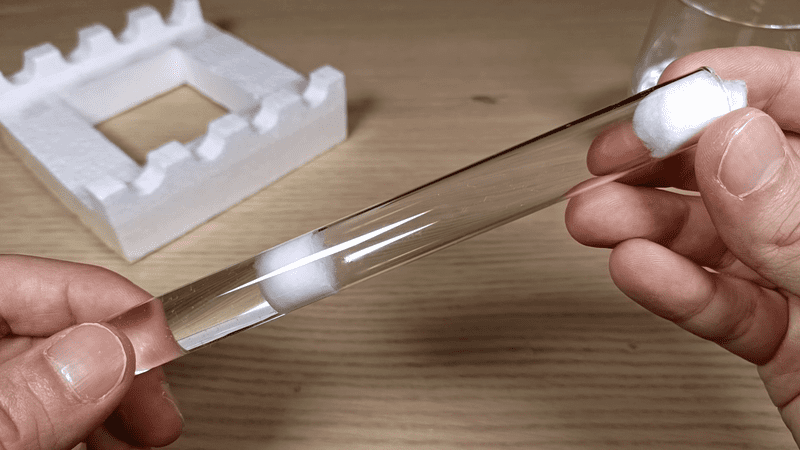
If you just found your queen and want to know how to create the perfect environment for her, check out this guide on how to make a test tube setup! This is the perfect way to start your ant colony!
FAQs
The ideal temperature for Tetramorium caespitum is between 21 and 27 degrees Celsius.
Tetramorium caespitum prefers humidity levels between 50% and 60%. You can maintain moisture by spraying water or adding moisture retention materials.
They need sugar for the workers and protein for the queen and brood. Sugar water and honey are good sugar sources, while insects provide essential protein.
Yes, they need to hibernate from late October to early March at temperatures between 5 and 8 degrees Celsius.
Acrylic nests are recommended as they are escape-proof, but test tube-based nests and naturalistic setups are also viable options.
